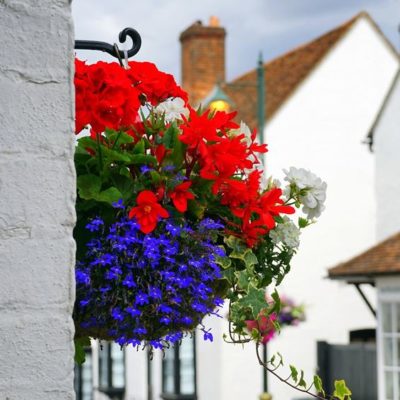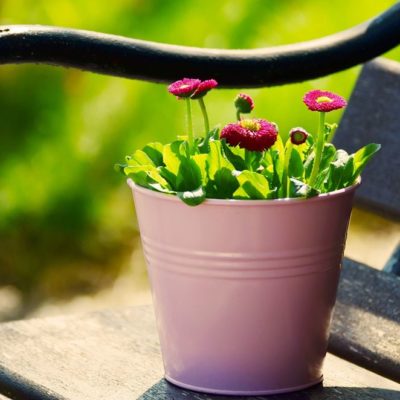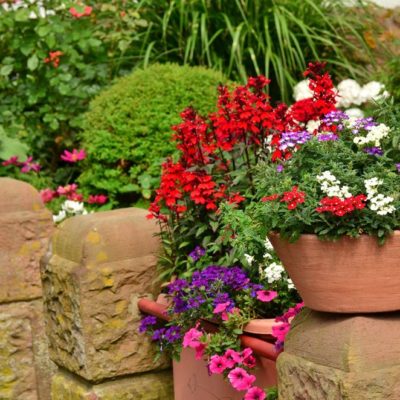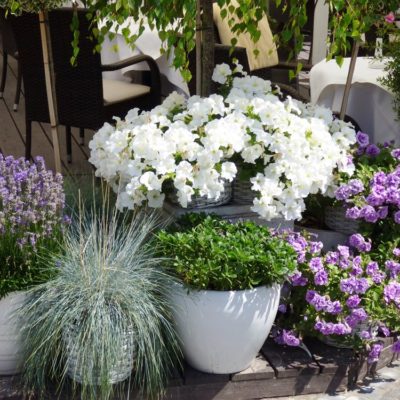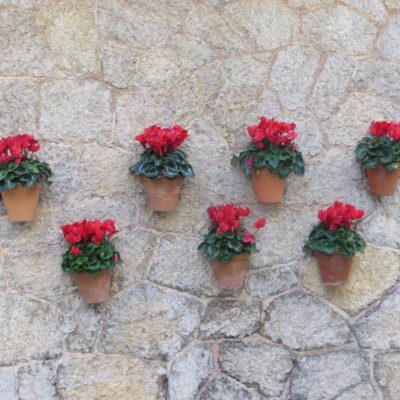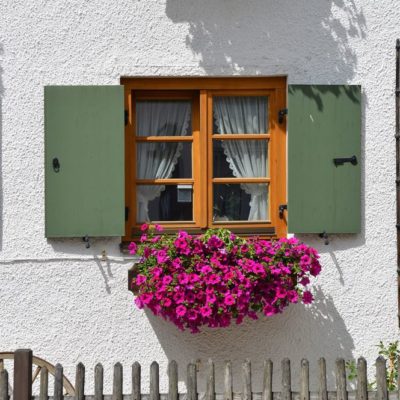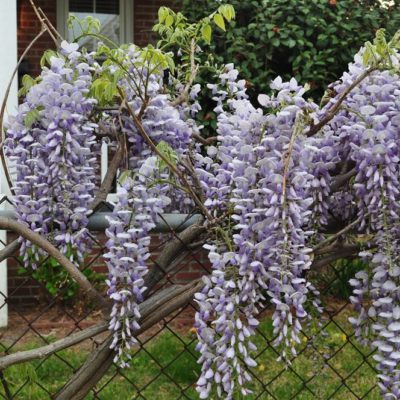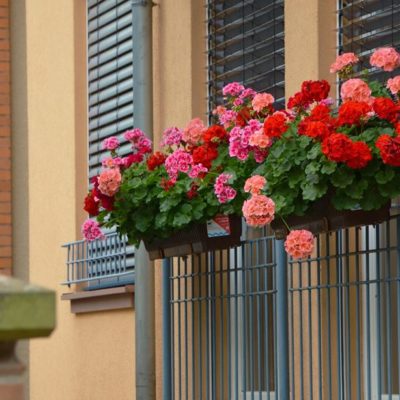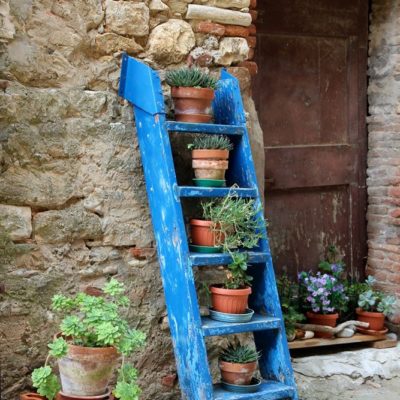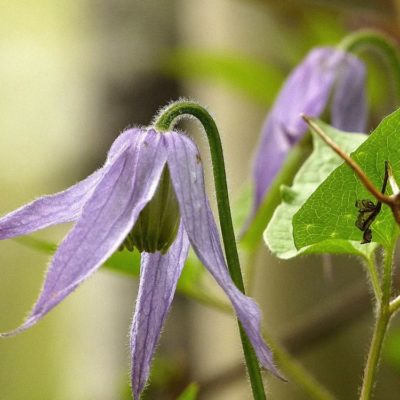Making space for all the things you want to grow
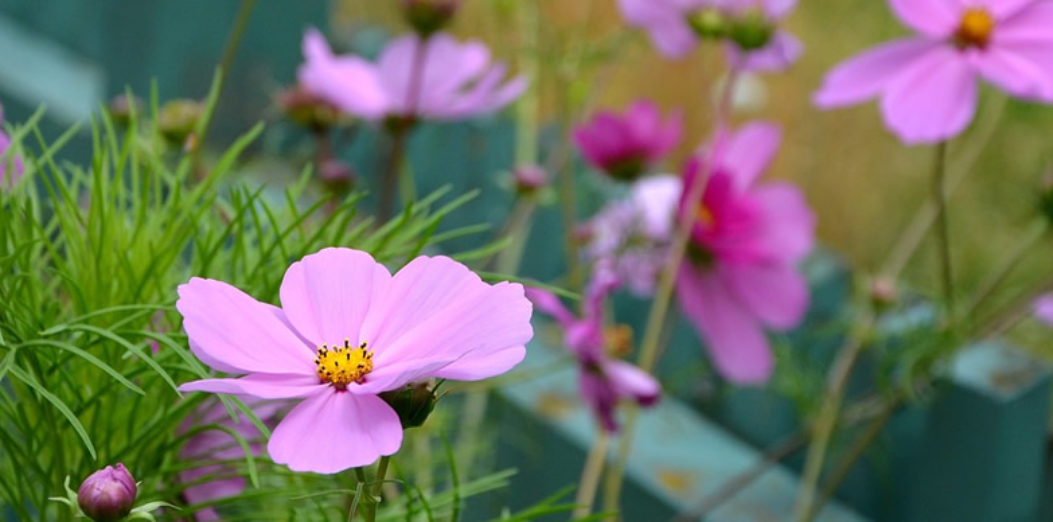
Modern new build houses seem to be allocated ever smaller gardens; we find that even large dwellings nowadays are often located on relatively small plots. This creates quite a challenge when it comes to finding space for everything you want to grow in your garden – and all the more so if the planting is having to compete for space with the children’s trampoline, the shed/studio-office, a hot tub… you get the idea. This is particularly an issue for people wanting to downsize, but who are keen to retain some of their most treasured plants – it can be a real struggle to find space to squeeze them all in.
So how do you find that extra little bit of growing space?
1. Think pots!
This is the obvious one. Growing plants in containers, pots and planters on a patio and elsewhere is a brilliant way of instantly adding some colour and variety to your garden, without taking up any border space. It’s a very manageable approach to gardening too – they’re a good place to experiment and it’s easy to ring the changes throughout the year. It doesn’t just have to be flowers either – herbs, salads, and even some vegetables and fruit can all be grown successfully in pots. Container gardening also opens up opportunities for growing plants that are fussy on soil – acid-loving Blueberries for example will grow very happily in large pots, provided they are planted in ericaceous compost/topped up with a feed every now and then.
2. Think vertically
As an extension of the above – don’t constrain yourself to pots on the ground! Think about hanging baskets, wall brackets and troughs. They do this with great panache on the continent, with bold window box and wall planting accentuating the traditional white/colour-washed houses. Again, it gives you the opportunity to maximise your planting space, try something new, and at the same time add some vertical interest to your house exterior or garden. Perhaps even consider installing some trellis, to which troughs and/or planters could be attached to create a green wall effect. A climber or two growing out of the ground at the base will help keep things looking natural.
Another option is to locate some staging or an etagere to house a collection of pots. A two-tiered arrangement of troughs around the edge of a conservatory/garden room is a perfect location for growing salad vegetables – upturned flowerpots are a neat way of raising the second level off the ground. Or perhaps grow some slightly taller annuals that will be visible through the windows inside.
3. Make the most of what you’ve got
Do you have any chain link fencing at the boundary, or some railings on a retaining wall? These could perhaps be used as support structures for climbers. I have seen some wonderful Wisteria grown along an old tatty metal fence in Umbria.
4. Be creative with your border planting
The days when there was space for a separate kitchen garden, formal garden, rose garden… or for that matter, just space for a separate vegetable patch… for many of us those days are long gone (or never existed in the first place!) But don’t be afraid to mix up plant types – for example, could you squeeze in that gooseberry bush you want in with some other shrubs? Could you grow one plant through another? For example, allowing a Spring flowering Clematis (e.g. C. alpina) to scramble through a summer flowering shrub will give that extra bit of interest.
5. Think about successional planting
Some plants have their moments of flowering glory, and then die down leaving an empty space in the border until the following year – good examples being Paeonies and Bleeding Heart (Dicentra spectabilis, now sadly renamed Lamprocapnos spectabilis). By planting something close by (for example, Japanese Anemones), which grows up as, or after, these plants die down, you will create a much more productive and colourful garden all year around – filling the space in terms of both foliage and flower.
And if all that fails…
… you can always go back to basics and try de-cluttering – maybe removing one of two large shrubs to make room for something new, or taking a more drastic approach and redesigning the whole garden to add more planting space.
Or maybe get an allotment!
